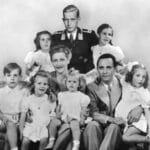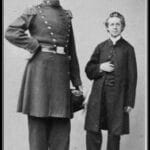Unmasking the Power Behind the Holocaust: Who Was Ernst Kaltenbrunner?
Ernst Kaltenbrunner. The name alone evokes a chill, synonymous with the horrors of the Holocaust. But who was this man, and how did he rise from an ordinary Austrian lawyer to become one of the key architects of genocide?
Born in 1903, Kaltenbrunner’s early life held little hint of the monster he would become. However, his journey into the darkest chapters of history began in 1930 when he joined the Nazi Party. His ascent within the party was swift, fueled by his ruthlessness and unwavering loyalty to the Nazi cause. After the Anschluss, Germany’s annexation of Austria in 1938, Kaltenbrunner’s brutality and anti-Semitism propelled him to become the head of the SS and police in his homeland. This was just the beginning of his terrifying ascent.
In 1943, Kaltenbrunner stepped into the void left by the feared Reinhard Heydrich, assuming the mantle of Chief of the Reich Security Main Office (RSHA). Imagine a vast web of power, controlling the Gestapo (secret police), the Kripo (criminal police), and the SD (intelligence agency) – this was the terrifying reach of the RSHA. This position placed him at the very heart of the Nazi regime’s reign of terror, granting him chilling authority over the machinery of the Holocaust – the concentration camp system.
The RSHA’s Grip: Kaltenbrunner’s Role in the Holocaust
With his control of the RSHA, Kaltenbrunner didn’t merely oversee the Holocaust; he actively shaped it. He became a central figure in the systematic extermination of millions, directly involved in the deportation of Jews and other “undesirables” to the death camps. He meticulously implemented policies designed to eradicate entire populations. Under Kaltenbrunner’s watch, the already horrific concentration camp system expanded, morphing into an even more efficient engine of suffering and death.
Kaltenbrunner’s role extended far beyond a desk job. Evidence suggests he personally signed off on documents that sent 1.7 million Jewish people to extermination camps as part of “Operation Reinhard,” a horrific plan targeting Jewish communities in Poland. His signature, a chilling mark of authority, represented countless lost lives.
Beyond the Shadow of Himmler: The Unique Threat of Kaltenbrunner
While Heinrich Himmler is often associated with the SS and the Holocaust, Kaltenbrunner’s direct control over the RSHA arguably gave him more operational power. He wasn’t just following orders; he was actively shaping the implementation of the “Final Solution,” transforming the RSHA from an instrument of persecution into a chillingly efficient machine of genocide.
Kaltenbrunner’s brutality wasn’t limited to the Jewish people. His reign of terror extended to Roma people, homosexuals, prisoners of war, and anyone considered an enemy of the Nazi regime. He embodied the calculated cruelty and unchecked power that defined the Nazi regime.
Facing the Music: Kaltenbrunner’s Trial and Legacy
Kaltenbrunner’s reign of terror ended with the fall of the Third Reich in 1945. Captured by Allied forces, he was brought before the International Military Tribunal at Nuremberg to face justice for his unspeakable crimes.
Charged with war crimes and crimes against humanity, Kaltenbrunner attempted to deflect responsibility, claiming ignorance of the atrocities committed under his watch. However, the evidence against him – mountains of documents bearing his signature, coupled with the harrowing testimonies of survivors – was overwhelming. The court saw through his lies.
On October 1, 1946, Kaltenbrunner was found guilty and sentenced to death by hanging. His execution, on October 16, 1946, brought an end to a life stained with unimaginable cruelty. But his legacy, a chilling testament to the horrors of unchecked power and blind fanaticism, continues to haunt us. Ernst Kaltenbrunner’s name will forever be etched in history as a symbol of the Holocaust’s calculated brutality and the depths of human depravity.
Exploring Further: Lives Intertwined with History
To understand the full scope of the 20th century, it’s essential to examine the lives touched by its tumultuous events. Delve into the captivating biographies of individuals who shaped and were shaped by history:
- Eleanor Louise Cowell: Mother of Franklin Delano Roosevelt, her influence on one of America’s most consequential presidents offers a unique historical perspective.
- Ethel Winters: A prominent figure in the American Communist Party, her life reflects the complexities of political ideology and social justice movements.
- Elvita Adams: Famous for surviving a fall from the Empire State Building, her story speaks to both human resilience and the allure of sensational events.
- Ernest Hemingway Grandchildren: Explore the legacy of literary icon Ernest Hemingway through the lives of his grandchildren, offering a glimpse into the impact of family and fame.
By studying these interconnected lives, we gain a deeper understanding of the forces that shaped the 20th century and continue to resonate today.
- Crypto Quotes’ Red Flags: Avoid Costly Mistakes - June 30, 2025
- Unlock Inspirational Crypto Quotes: Future Predictions - June 30, 2025
- Famous Bitcoin Quotes: A Deep Dive into Crypto’s History - June 30, 2025















